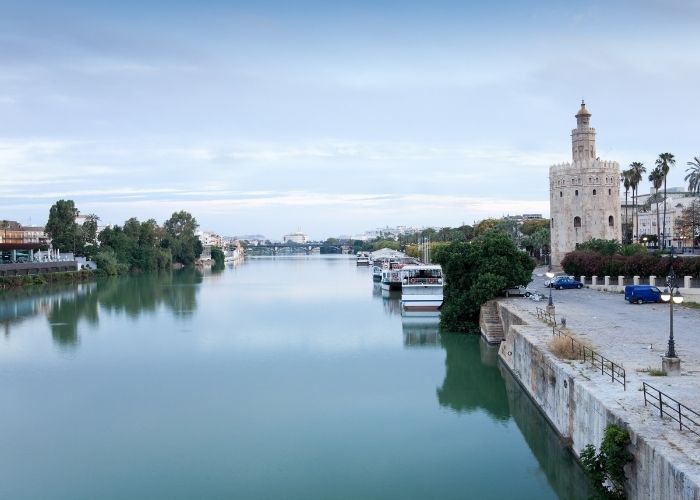ANDALUCIA – The current water level of the Guadalquivir River has not been this low since 1995. As a result, 60% less water is entering the reservoirs. This drought is an alarming situation for nature and the farmers who depend on this water.
The Guadalquivir runs from east to west through six provinces of Andalucia and is the fifth longest river in Spain. However, despite the lowest water level recorded in 26 years, central government has not yet granted the official drought status. In the last year, there was 21% less rainfall than average over the past 25 years. Furthermore, if the current drought continues, the river´s condition will be in serious danger during September or October, experts say.
Adjust water policy
Now the Guadalquivir basin is filled to 35% of its maximum water capacity. According to President Joaquín Páez of the Hydrographic Confederation of the Guadalquivir, in this serious situation it is necessary to look not only at the amount of agricultural land to be irrigated with the river water, but also at the type of agriculture. Therefore, efficient water use is more important than ever in the area.
The confederation wants to allow only 3,000 cubic hectometers of water per hectare of farmland. But farmers are demanding 300 hectometres more to protect their crops from drought. Farmers, cooperatives and municipalities in the northwestern coastal area of Andalucia (Bajo Guadalquivir) do not consider the situation urgent yet. This is because they believe the amount of water in the reservoirs has not yet reached the critical limit where water use for agriculture and industry must be reduced. The crops grown here (mainly horticulture, tomatoes and cotton) are an important source of employment in this region. Therefore, in the event of water shortages, fewer workers will be deployed and part of the harvest will be lost due to the drought.
Increase in agricultural land
In recent years, however, the water requirement has risen sharply because considerably more agricultural land has been added. As a result, the increased irrigation also has consequences for sustainability. 40% of Spanish territory is threatened with desertification as a result of a poorly implemented irrigation policy. According to environmental organisation Ecolistas en Acción, more than 84% of the available water is used for agriculture and industry. This organisation strongly opposes the ever-growing area of agricultural land in Spain that needs to be irrigated. The relatively unprofitable olive cultivation in Andalucia alone consumes 22% of the available water.
As a result, rice farmers protested last May because they felt that water distribution among different types of agricultural crops is unfairly distributed in Spain. They receive half as much water as growers of other crops, while rice cultivation is one of the most profitable and also provides considerable employment.
All the reservoirs of Andalucia together have a maximum water capacity of 11,167 cubic hectometres. Currently there is only 4,226 cubic hectometres of water available, which is 37.84%. That is 7.22 percentage points less compared to the comparable last year, when only 45.06% of the maximum capacity was available.


